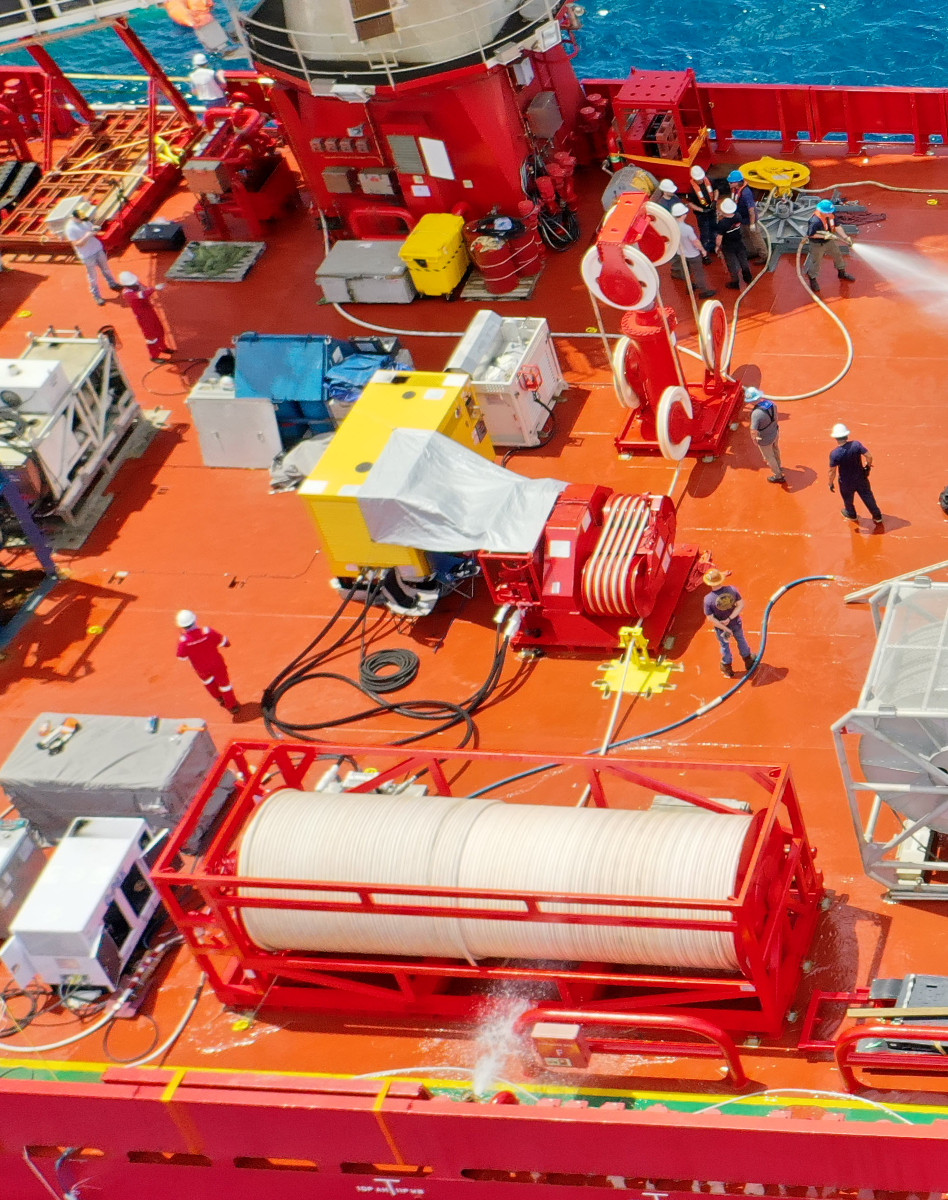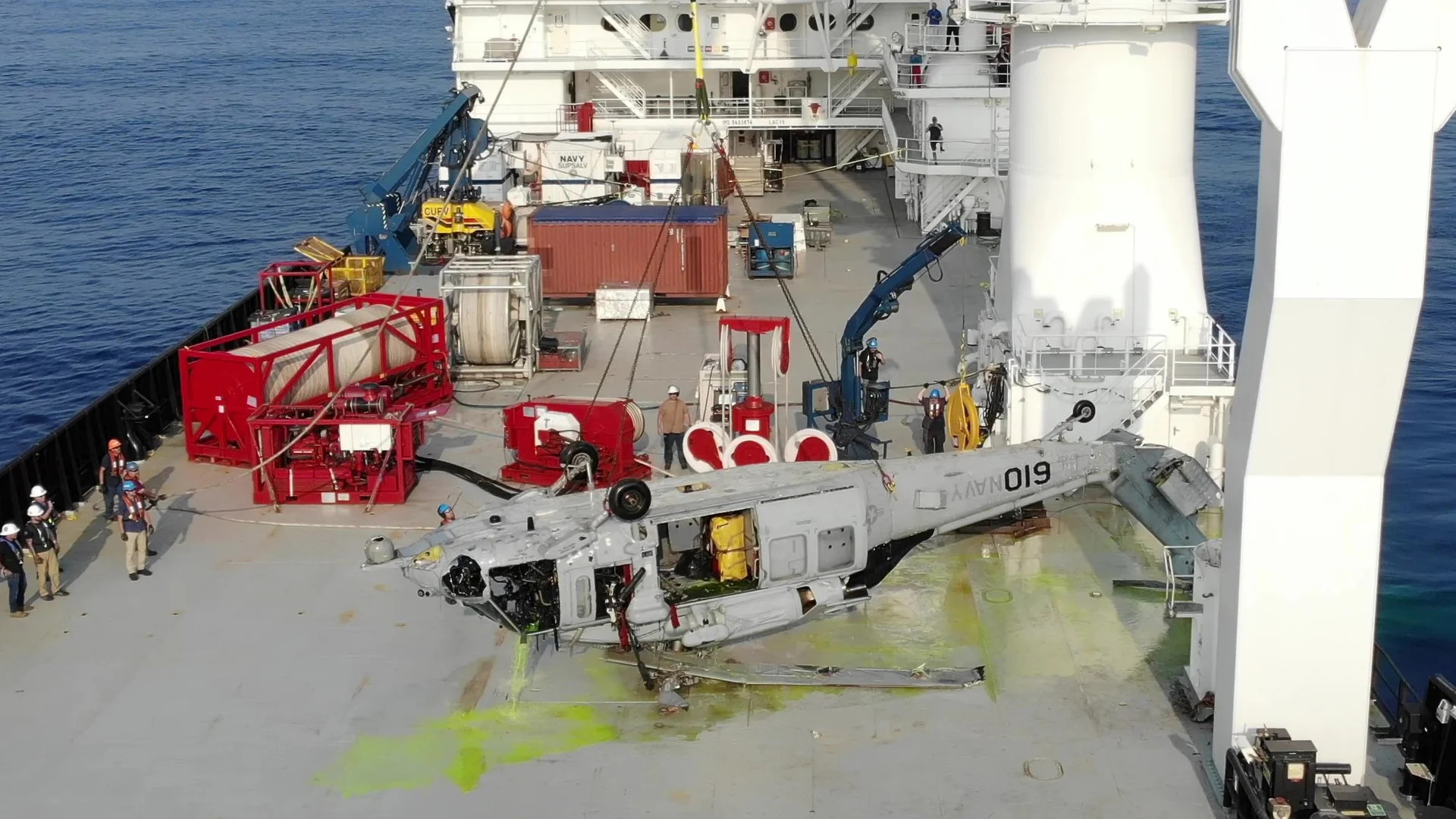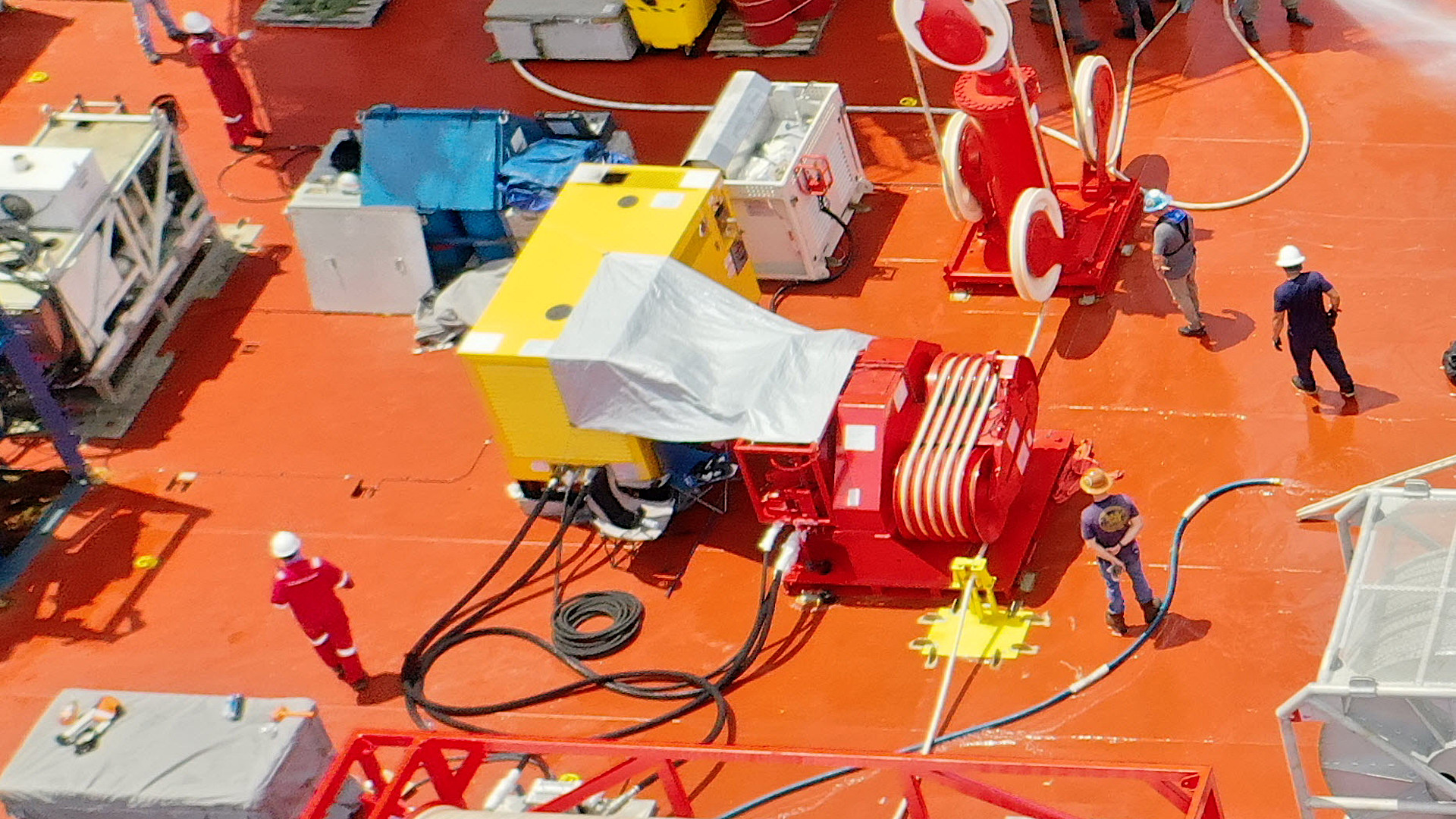The U.S. Navy says that its Flyaway Deep Ocean Salvage System, or FADOSS, has successfully arrived on Canada’s Newfoundland island as part of the ongoing effort to find the missing Titan submersible. However, it will take at least a day to install it on a ship, which the service says it has yet to secure. This all comes as Titan is now believed to have well less than 24 hours’ worth of oxygen left. Readers of The War Zone can get more fully up to speed on what is known currently about this incident and the search and rescue effort in our previous reporting here.
A Navy official provided details about FADOSS and its deployment in support of the ongoing rescue effort to The War Zone and other outlets during a background briefing earlier today. The service first announced yesterday that it would be sending the salvage system to help.

FADOSS is a readily deployable and modular deep-sea salvage system that can be installed on any suitable ship, or “vessels of opportunity” as the Navy refers to them. The system is capable of retrieving objects weighing up to 60,000 pounds from depths deeper than 19,000 feet. Titan weighs approximately 23,000 pounds and was taking tourists to see the wreck of the HMS Titanic, which sits at a depth of around 12,500 feet, when it went missing in the Atlantic Ocean this past weekend.
A separate remotely operated vehicle (ROV) is used to actually link FADOSS to the object being recovered. It is unclear whether or not the Navy’s own CURV-21 or one of the commercial ROVs that are already being used to search for Titan would be used for this purpose.
FADOSS is currently “standing by ready for mobilization. We’re lining up a vessel of opportunity for it now,” the Navy official said. “We’re trying to get round-the-clock welders.”
When installed, FADOSS “is welded to the deck due to the structural requirements for the lift to support the weight of whatever object we’re pulling off the bottom,” they continued. “Our estimate is approximately 24 hours [of] around-the-clock operation to weld it and secure it to the deck of the vessel prior to getting underway.”
The official added that the Navy was in line to charter a vessel to install the FADOSS on, but that the service has not yet actually done so. They could not immediately say how long it might take to conclude such an agreement before the installation process could even begin.
The Navy has stressed that it does not have a firm timeline yet for how long it might take to have the FADOSS installed and at sea.
This in turn prompted questions during the background briefing about whether the search and rescue operation was transitioning to more of a recovery effort, which the Navy said it would have to respond to separately. At the time of writing, there has been no word yet publicly from the U.S. Coast Guard, which is leading the operation, about whether or not the Titan submersible has been located.
There has been some very cautious optimism in the past 24 hours or so after what sounded like banging occurring at regular intervals was picked up by aircraft-dropped sonobuoys taking part in the search for Titan. The exact source of that noise remains unclear, but it is a common practice for individuals trapped in stricken submarines to bang on the inside of the hull of their vessel to try to signal to rescuers.
No matter what, any retrieval of a large object from extreme depths is a complex endeavor. High pressures, weather, and currents, coupled with the simple time it takes to lower the required equipment down to the ocean floor and bring everything back up safely, all present significant challenges. There’s also the matter of the weather up on the surface.
That being said, “the whole point of this system [FADOSS] is to compensate for the shift motion. That way there is no snap loading at the line,” the Navy official explained during today’s briefing. “So a lot of times when you don’t have that motion compensation, that’s where like additional damage and stuff starts to happen. Especially if you have multiple items together, that snap loading… accelerates.”
FADOSS is “the safest for the equipment, it’s the safest for the vessel, and for the personnel on deck that are operating the equipment,” they added.
However, the Navy official also said they did not know if FADOSS specifically has ever been used to save a life, or even to attempt to do so. FADOSS has been used in real-world salvage efforts, but typically to recover things like downed aircraft and helicopters from the bottom of the ocean.

All of this can only raise general questions about the prospects for rescuing the five individuals who were traveling inside Titan when it went missing. The submersible’s design provides around 96 hours of oxygen at most. It has now been the better part of three days since anyone last had contact with its occupants.
Only time will tell what the final outcome of this unfortunate incident might be, but what we do know is that the Navy’s specialized deep-sea recovery system is a day away at very best from being ready to help at all.
Contact the author: joe@thedrive.com
